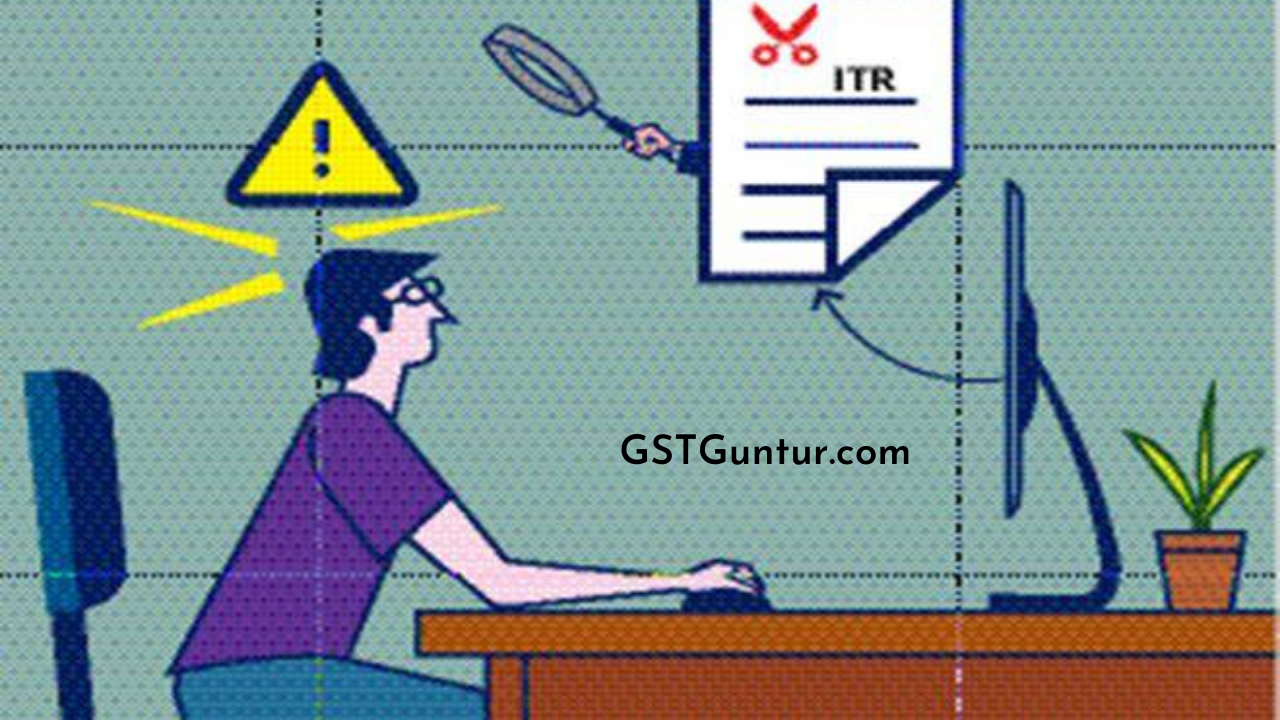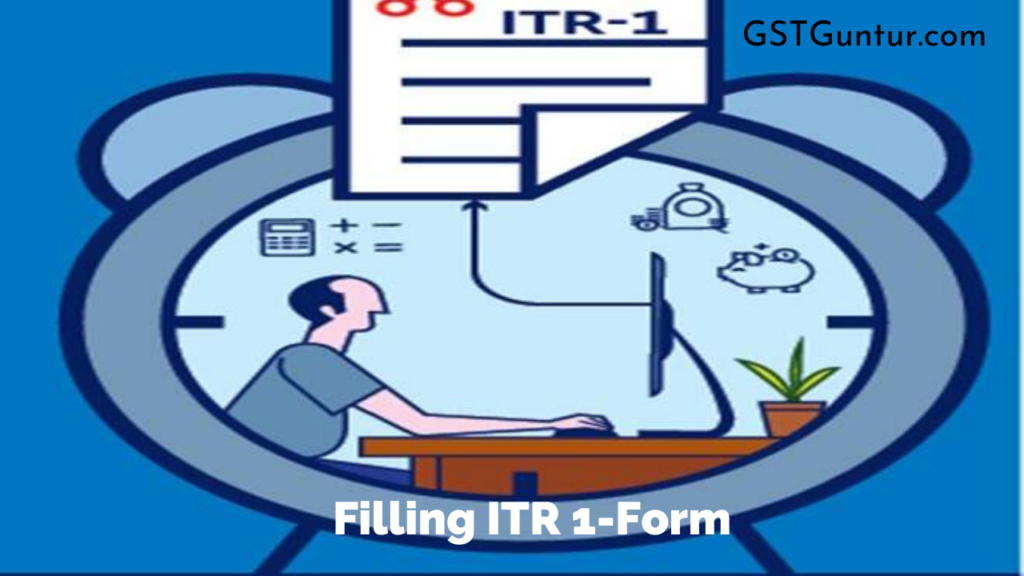Filling ITR 1-Form: People with a yearly pay of more than Rs. 2.5 lakh (for those under 60 years old) or Rs 3 lakh (for those over 60 but under 80 years old) or Rs 5 lakh are obligated to document the Income Tax Returns (for those over 80 years old).
Further to that, if a client desires to claim a refund from the Income Tax Department or apply for a loan or a visa, they must document the Income Tax Returns.
These exemption thresholds change on a regular schedule, contingent upon federal guidelines and notices.
Types of ITR Forms
The various types of ITR forms:
- ITR 1 is also known as SAHAJ
- ITR 2
- ITR 3
- SUGAM or the ITR 4
- ITR 5
Individuals must file the Income Tax Return whether they have more than one stream of revenue (capital gains, house land, etc.) or have acquired cash flow from overseas investments within the economic year.
What Exactly is the ITR 1?
This procedure should always be used by resident Indians who fall into one of the underneath referenced classes:
- A pension or salary is the sole source of income.
- A single house property generates income. But nevertheless, if the taxpayer carried over the damages through the past year, the exemption is permitted.
- If the client’s agricultural production generates revenue of less than or equal to Rs.5,000
- The overall income obtained is restricted to a maximum of Rs.50 lakh. Income derived from other causes, such as winning horse races, the auction, so on and so forth.
Specific types of salaried citizens must file their returns using different programs, such as ITR or ITR-2A.
Who Can’t Choose This Particular Choice?
Individuals who come underneath the categories listed are not qualifying for filing the ITR-1:
- On the occasion that the total revenue obtained by the taxpayer passes Rs.50,000
- In the event that people own capital gains that fall under taxation scheme
- On the occasion that income is received by more than just one house property.
- If the taxpayer in question made any transactions in non – listed equity capital during the monetary year
- In the event that you are a Non-Resident Indian (NRI) and a Resident Other Than Ordinary Resident (RNOR)
- In the event that the income produced by agriculture equals Rs.5,000 or more
- If your money comes from a profession or a company
- If the client is the Chairman of an organization
- Suppose any income is obtained from a residential project outside of India in case a person has foreign bank accounts or foreign revenue.
What is The Procedure To Download Form ITR-1?
A taxpayer must take the measures outlined below to download Form ITR-1:
- Step 1: At first, the concerned applicant must Visit the official website of Income Tax https://www.incometaxindiaefiling.gov.in/home
- Step 2: In the following step, they have to click on the “Offline Utilities” option available under the Download tab.
- Step 3: Following, they have to select the “Income Tax Return Preparation Utilities” option present.
- Step 4: Then, the applicant must Choose their respective Assessment Year.
- Step 5: Next, they will have to click the “Excel Utility” option to manually fill the credentials under the ITR 1 column and, consequently, download it.
- Step 6: In the next step, they will have to Extract the downloaded file and fill in the required particulars.
Details to Keep Handy and Organized before COMPLETING filing YOUR ITR-1
- FORM 16: This form is issued by all of your supervisors for the given Monetary Year
- FORM 26 AS: Make sure to double-check that the TDS included on Form 16 is in accordance with the TDS shown on Part A of the Form 26AS
- BANK INVESTMENT Accreditation testaments: Credit account data – bank passbook or FD certificate – interest account details.
- RECEIPTS: This comes in handy when you’re unable to submit confirmation of such exclusions or deductions (such as HRA allowances or Section 80C or 80D deductions) to your company on deadline. In that case, keep all these receipts on record so that you could always report them specifically on your income tax return file without fail.
- AADHAAR CARD is Necessary FOR Income Tax return filing: The Income Tax Department has made it obligatory for all taxpayers to link their Aadhaar card to their PAN on the Income Tax Return official portal for better evaluation and faster record keeping.
- Bank Account credentials:
- In 2015, the Income Tax Department made it compulsory for all taxpayers to include all bank account transaction details in their tax returns. This also pretty much holds in the case of shared accounts.
- When e-filing an IT return, the department wouldn’t need to have you include any of your financial institutions compulsorily. However, in the event of opening another new savings account, the completion of KYC and the submission of a PAN number are deemed necessary.
- Since the pan number is connected to the income tax return details, the government has the whole idea and information of all bank accounts that you may have. It is not obligatory to mention the subtleties of the inactive accounts.
- As a result, specifics of accounts that have not been in service for the past 36 months will be skipped because they are deemed inactive or dormant.
Offline Form ITR-1 Completion Procedure
- If an assessee’s annual revenue is less than Rs 5 lakh, they might document the ITR offline mode.
- They can either pick the form from the Income Tax Office or download it from the income tax official portal, i.e., incometaxindia.gov.in.
- The concerned authorities must duly forward it to the relevant Assessing Officer or designated helpdesks such as “Aaykar Sampark Kendra” within the prescribed deadline.
- Together with the ITR form, they must essentially complete the acknowledgement form, which takes into account a rundown of the ITR.
- Following application, the applicant receives a validated copy of the acceptance form with an official stamp.

Filling Out Form ITR-1 Online
- Taxpayers must first register an account on the Income Tax Department’s official website.
- It is a one-time operation, and the login subtleties can be reused in all the coming future years.
- In particular, concerning the standard Excel utility, the I-T Department has likewise introduced a particular Java-based utility with several innovative features, such as direct upload, a simpler GUI, so on and so forth.
- Taxpayers may opt to apply their information using an excel/java utility or even without it.
Using a Java/Excel Utility to File the ITR 1
In order to help guide the individual, each section/schedule is explicitly intended with a particular colour code system. The following are the various kinds of cells in the sheets:
- The necessary which compulsorily need to be filled are highlighted in red. The entered data would have a green background (Certain fields are mandatory under clear, specific conditions only).
- Entering data columns with optional/non-mandatory fields has black font on a green background.
- Categories with auto-calculated/auto-populated values have a blue font and a white background colour. Corresponding Linked fields have a blue font for the labels and white background; therefore, no data is inputted by the individual, but a value is picked up from an existing cell elsewhere within the document.
- The numbers are all in Indian Rupees.
- Dates must be inserted in the dd/mm/yyyy configuration in all date fields.
- Just insert values up to two decimal places in percentage sections. (The percentage mark is not needed.)
Including more rows: Schedules such as TDS, TCS, IT, and so on facilitate consumers to enter data in a structured and tabular format. The applicant may fit as many rows as required by tapping the ‘Add rows’ button available under these tables.
Step-by-step Protocol
- First, the taxpayer must log in to the official portal, i.e., (https://incometaxindiaefiling.gov.in/) and then choose the appropriate ITR-1 Form.
- After which, they must download the ITR Java or Excel utility and submit all of the requisite credentials.
- It is critical to affirm the subtleties as referenced in Form 16 or Form 16A or Form 16B, as applicable, and Form 26AS.
- Upon being authenticated, the taxpayer can browse the Income Tax website and upload the return automatically using Java Utility.
- Alternatively, the taxpayer can generate an XML version of the return form and upload it to the portal.
- Following successful verification and uploading, an Acknowledgement message will be highlighted on the phone screen of the number linked with the portal.
- The taxpayer must then Download the ITR-V/Acknowledgement by clicking on the given link.
- The ITR-V likewise provided, which must be emailed by the taxpayer to the I-T Department’s email address as specified on the form.
Procedure for Creating the XML Version of the ITR-1
The following is the procedure for creating the XML version of the ITR-1
- At first, the taxpayer must authenticate all of the data inserted into the ITR Utility.
- Next, they should opt for the ‘Generate XML’ feature on the page.
- This should revalidate all of the sheets and take the concerned taxpayer to the confirmation tab, which in turn will demonstrate the different schedules (and the number of rows created per schedule) that are being developed.
- Upon confirmation, the applicant will create and save the XML by clicking on the ‘Save XML’ button.
- After accurately generating, a text with the name and location of the saved XML will be shown.
- The XML file should then be submitted to the e-filing website.
